
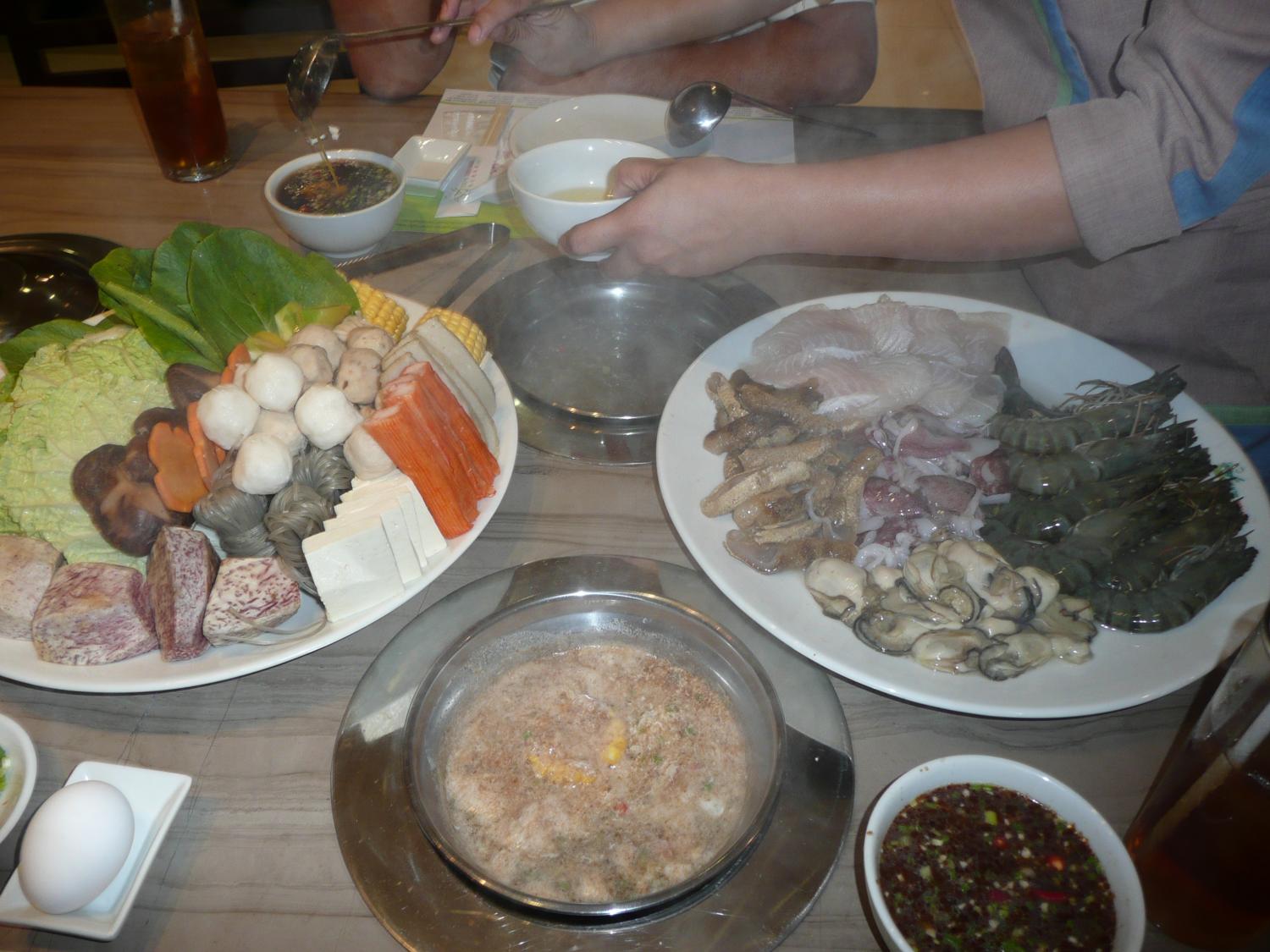
Getting properly acquainted with a new culture inevitably involves exploring the local cuisine. Easier said than done in some places….it’s rather simple to say to yourself, ‘sure, I’d eat that’, but would you? Well I’ve got some good news – in preparation for your future trip (that you may or may not be making) to the Philippines, I have done the dirty work for you. And I am happy to report that every single one of the dishes listed below will leave you hungry for more. Just…maybe don’t look at or think about what you’re actually eating.
That said, I would like to add that Filipino food doesn't really 'taste' like any other food I've had. If I had to, I would say that it’s a mix of Thai, Vietnamese, Indian, and Chinese....of course all surrounding countries and cultures....but it really does have a taste and texture of its own. Here are some of the unique, yet locally common, dishes I've tried to date.
Lechon
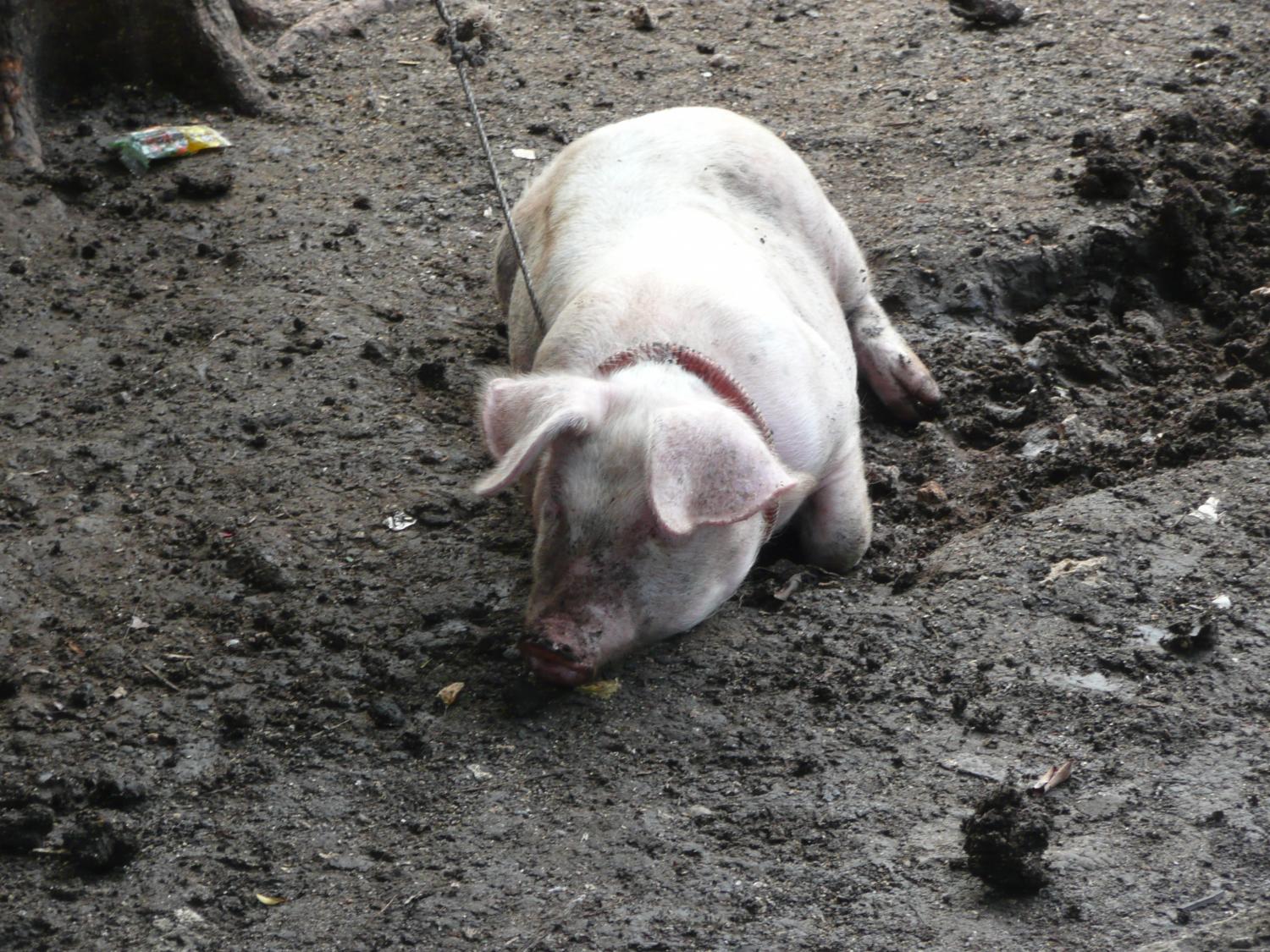
Let’s start with an easy one, and one of the most commonly consumed meats around the world – pork. In the Philippines, this dish is traditionally cooked by removing the insides of a whole pig and cooking it (skin-included) over an open fire for 5-6 hours. The result is a mix of tender pork and crispy/crunchy pig skin….don’t knock it until you try it – this is one of the most popular dishes amongst Filipinos.
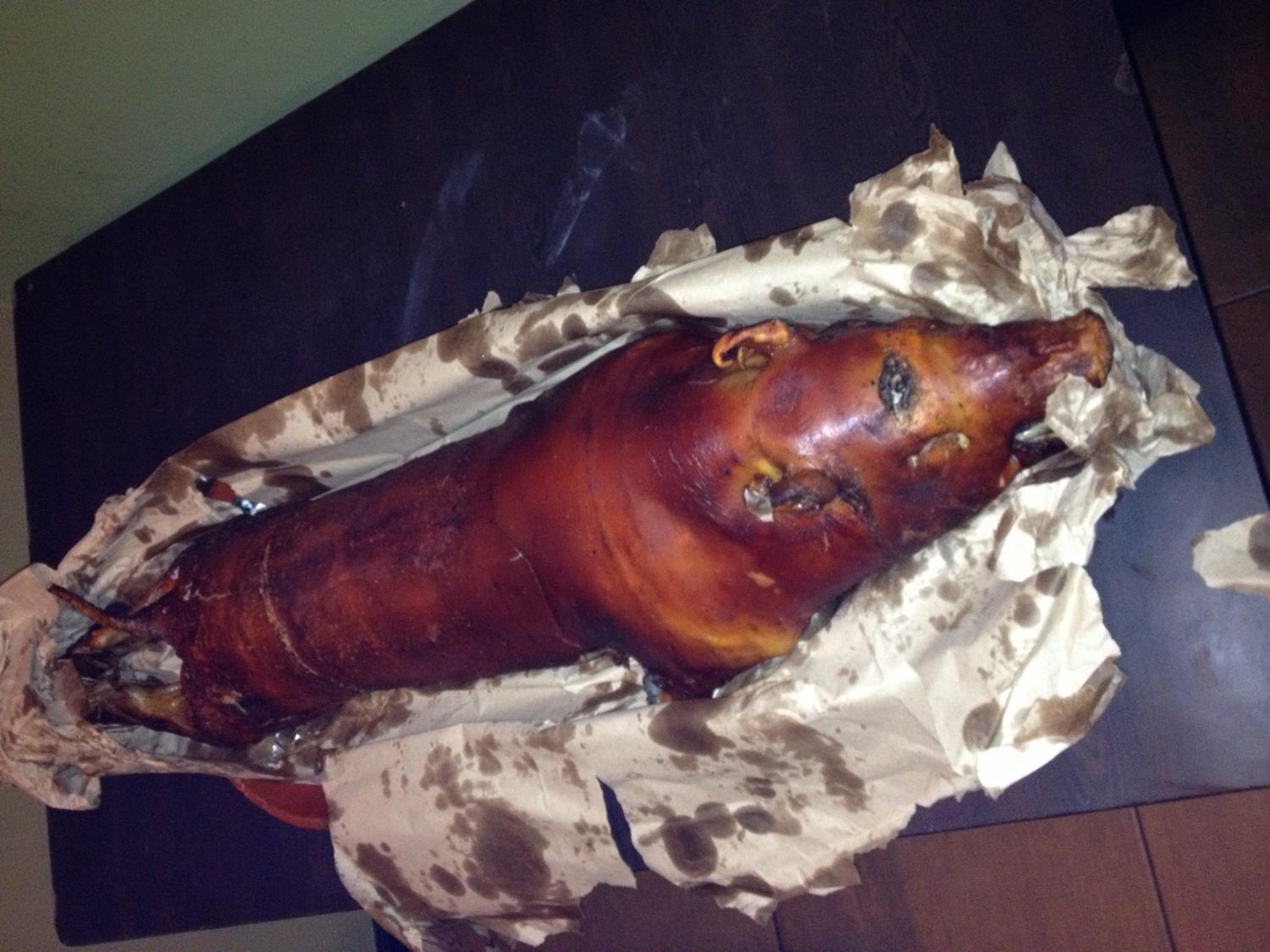
Here, as is the case in many Asian countries, it is customary to pair rice with every single meal regardless of what the main course happens to be. Some Filipinos would go as far as to say that if you don’t have rice with a meal, it’s not really a meal…I particularly like this rule for obvious reasons. The point simply being that lechon goes particularly well with rice. Also, when you try this dish you will likely have the opportunity to order a bowl of dinuguan, which of course the locals will insist you do. You wouldn’t want to be rude now, would you?
Dinuguan, aka pork’s blood
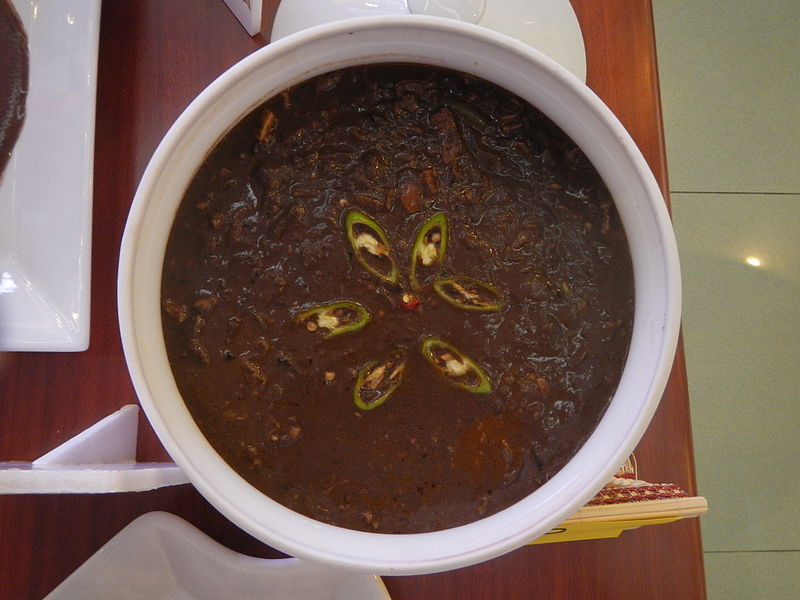
When I say don’t think about what you’re eating, I mean it. This dish is literally the blood of a pig, boiled alongside said pig’s (or maybe another pig, who knows) intestines, with a few pinches of an unspecified mixture of spices. The color is an appetizing dark red. Don’t eat this one at the beach, you might attract some great whites without even stepping foot in the water.
Balot

Filipinos have managed to perfect a way to enjoy an egg, after it’s actually ‘just an egg’…..and at the same time, to enjoy a duck, before it technically qualifies as ‘an actual duck’. Don't tell any animal rights activists, they will have a conniption. Here’s how it works – when an egg is laid, it is then placed into an incubator for 10-16 days. Before they hatch, the eggs are removed from the incubator and briefly cooked in boiling water. That’s it.
There is a special technique to eating these things. First you crack a hole in the top, dump a bunch of spicy vinegar inside, and shoot it down. Like so:
What you’re drinking is vinegar mixed with rich baby duck juices – yum. Second, begin to peel back the shell, while repeating step one whenever your egg/duck leaks anymore juices. DON’T LOOK AT WHAT YOU ARE EATING. I already said that, but seriously, don’t do it. Eat everything, except for the shell (obviously, as I was reminded upon asking that stupid question). I can’t really explain what it tastes like, but I can say that it’s delicious. Kind of like a hardboiled egg with vinegar, and some other miscellaneous tastes.
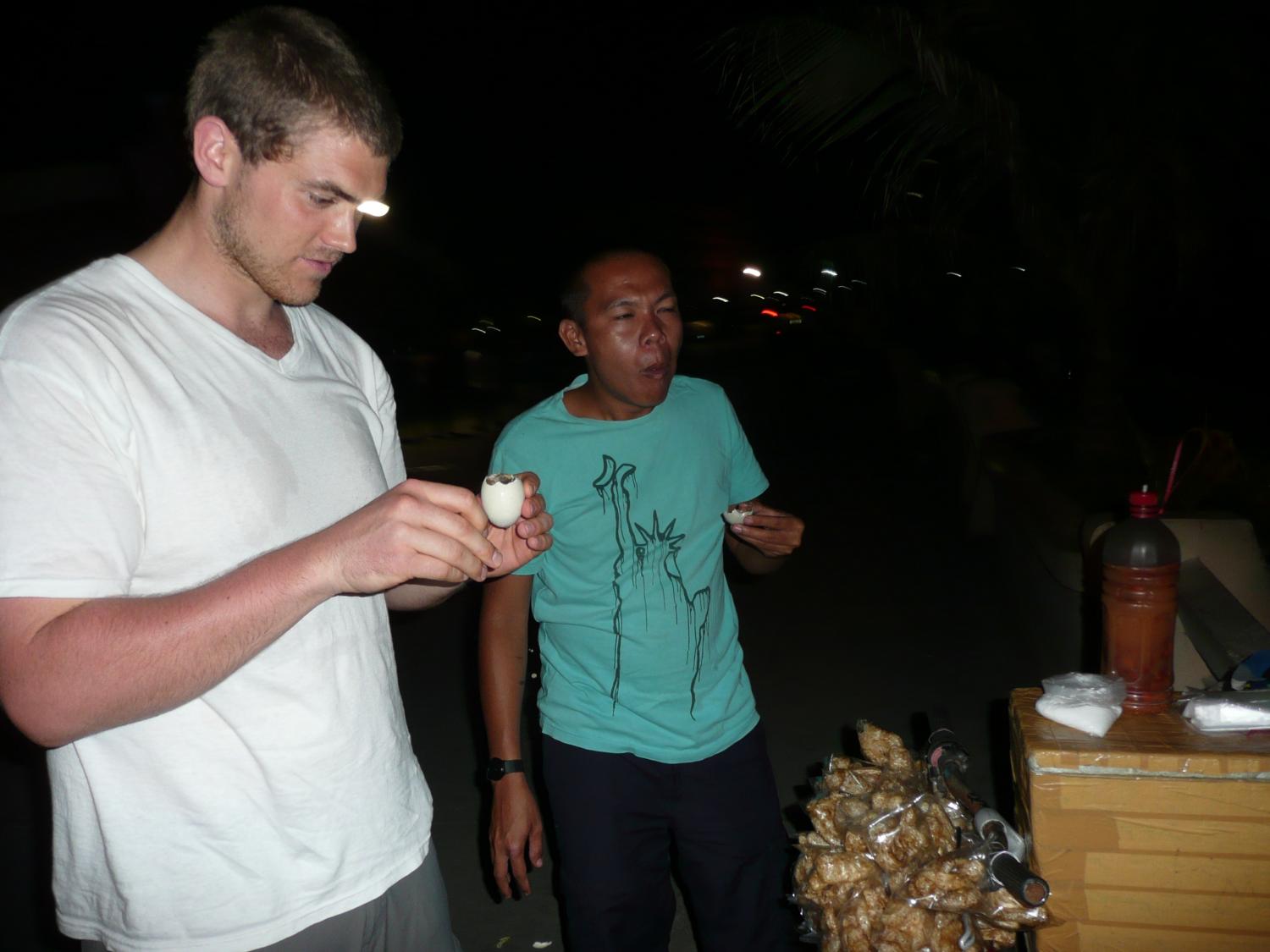
Those who are not in the mood for balut will tell you that their cholesterol is high, or maybe it will be their blood pressure. Yes, you’re eating a partially formed baby duck, so you’re going to be consuming a little yolk. However, the truth is that balot is rich in vitamins and nutrients.
In the city of Dumaguete (in the south of Negros) the oceanfront boardwalk is lined with local entrepreneurs interested in selling you some of their finest partially-developed ducks. Better arrive with your appetite - the more eggs/ducks you buy, the better deal you will be able to negotiate. If you're just in the mood for one, the starting rate is about 16 pesos per, or roughly 35 US cents. This item is best-paired with beer – however many eggs you’re planning to scarf down, bring that many beers.
Bulalo
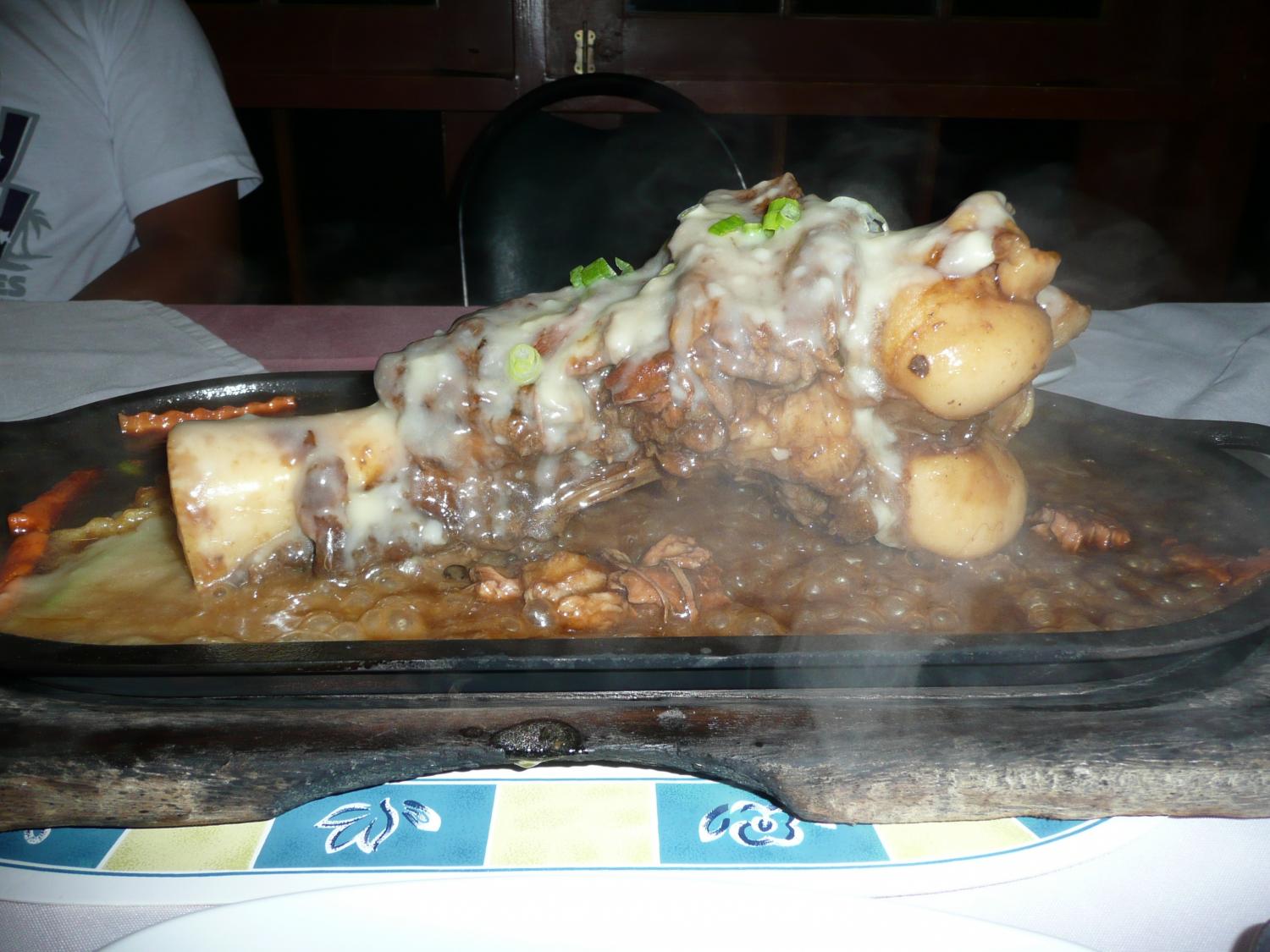
I had the pleasure of tasting this dish at the Royal Kitchen Inn (RKI), an establishment well-known amongst Filipinos for their bulalo. This dish isn’t so much exotic as it is impressive in presentation. While many restaurants serve bulalo as a soup, the RKI serves you the entire cow knee atop a piping hot iron skillet. The cow knee is fried, topped with cheeses and spices, and doused in sauce. You will have to fight your dinner companions for a taste of the marrow which can be scraped out of the end of the femur bone.
Tamilok

Legend has it that this particular dish was featured on the briefly-popular television show, Fear Factor…and if you judge things simply by looks, you will quickly understand why. Tamilok is a type of shipworm typically harvested from wood submerged in saltwater for long periods of time. They range in size from a few centimeters to as long as a meter. These are rich in protein and are easy to eat thanks to it’s incredibly slimey outer coat. If only they sold these in the states – I could forever substitute my steady diet of trail mix for tamilok.

Halo-halo

A favorite of locals when it’s hot, which is…all the time. The name is meant to translate to ‘everything mixed’ because this desert is exactly that. While there are plenty of variations, classic halo-halo includes several scoops of ice cream, gelatin, corn, cereal, and beans served in a big bowl or cup of crushed ice. Delicious!
I’ve been told that there are still plenty of other adventurous dishes to try, so I will likely be adding to this list over the next couple of months. As always, please let me know if you have any questions or suggestions for content: andy.kaestle@fellows.kiva.org
PREVIOUS ARTICLE
Day in the Life of a Zip Fellow →NEXT ARTICLE
Innovative Food Business Finds Support Online from Mentors and Lenders →













